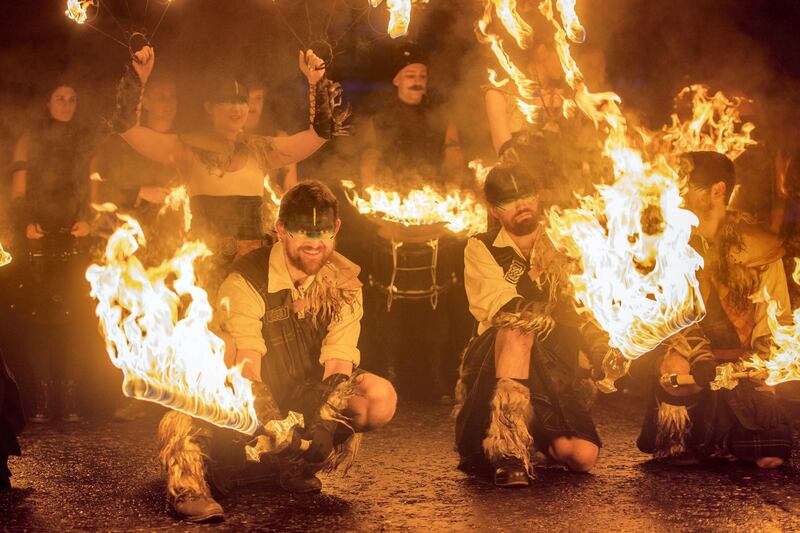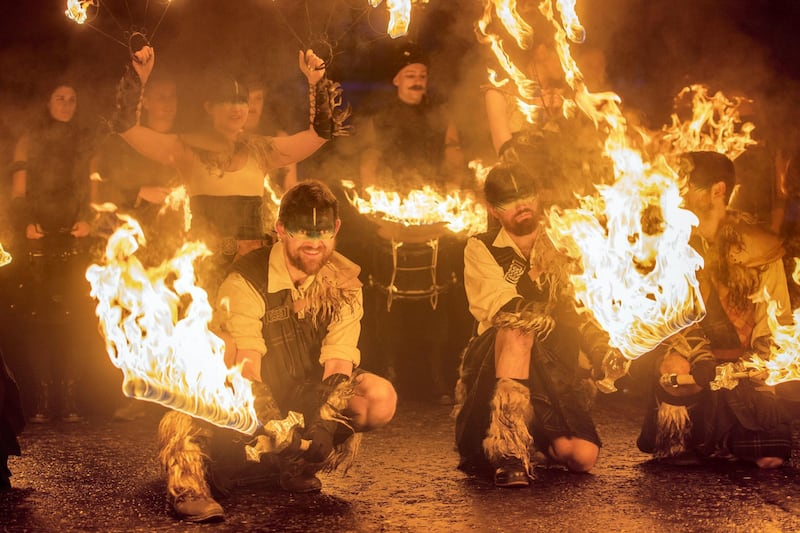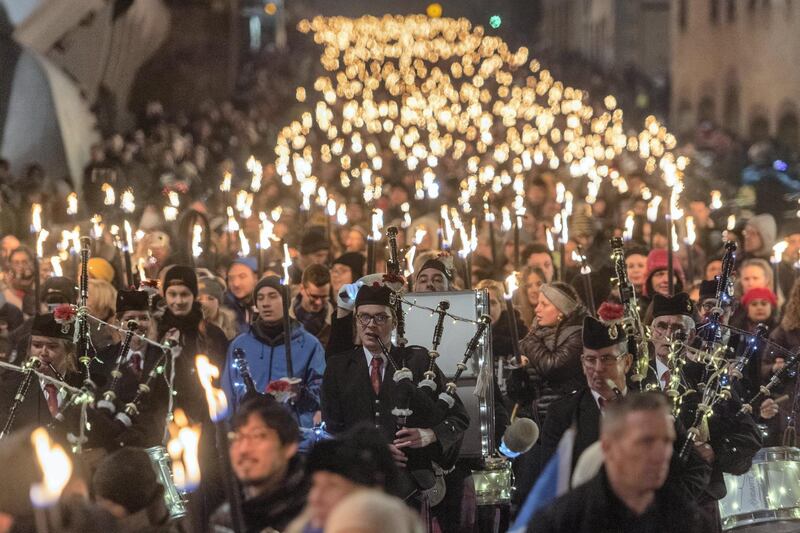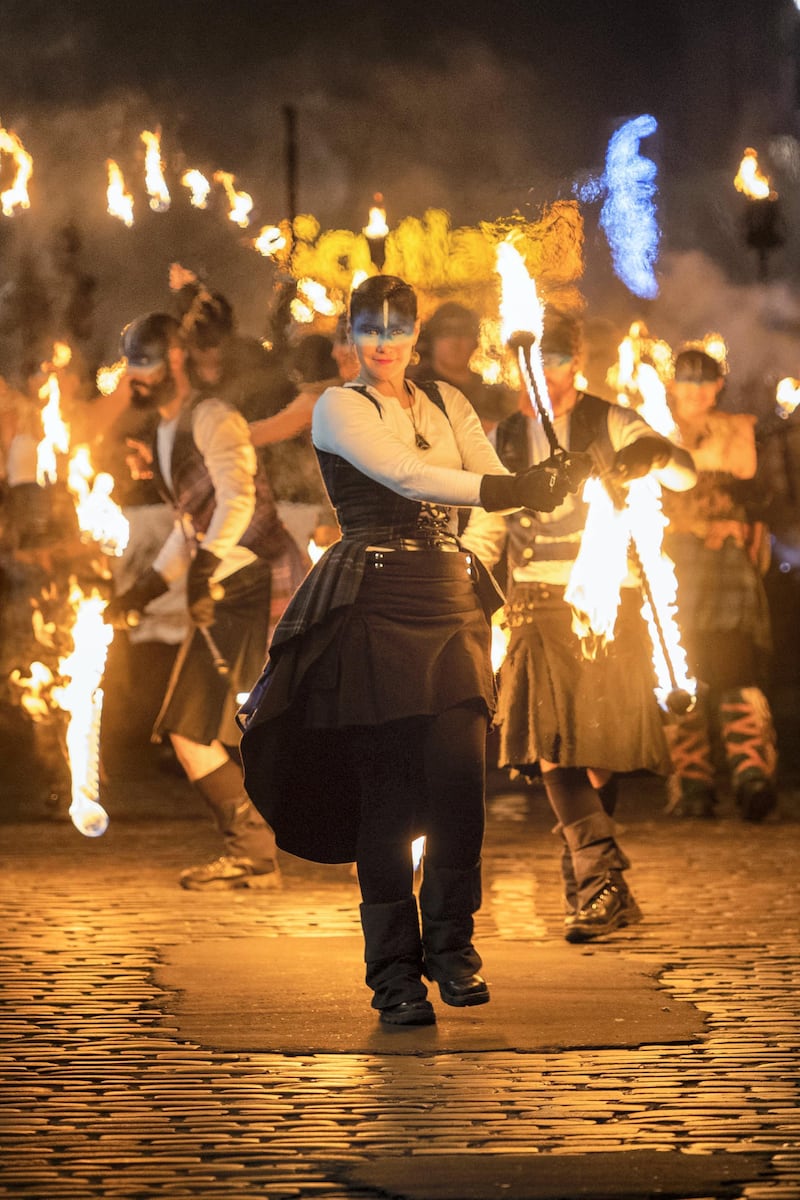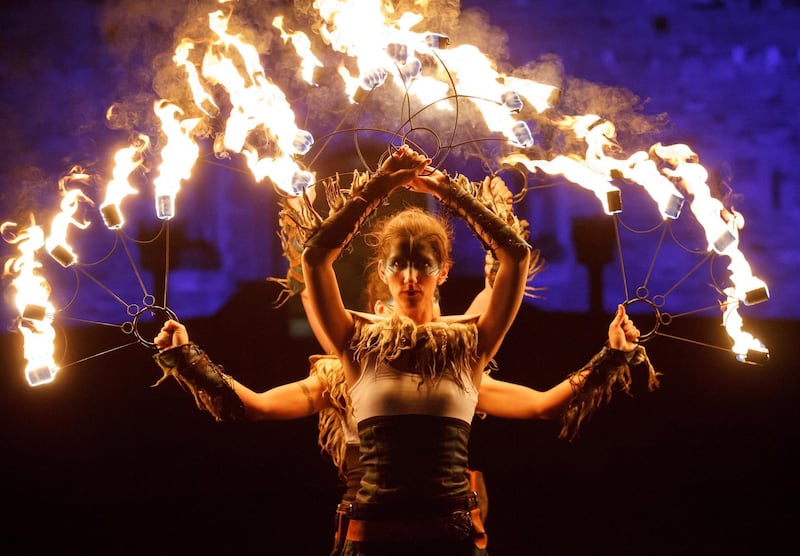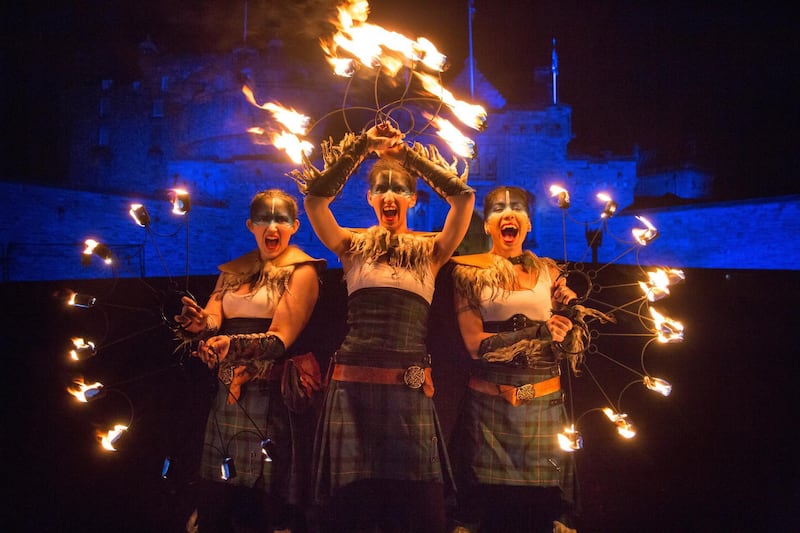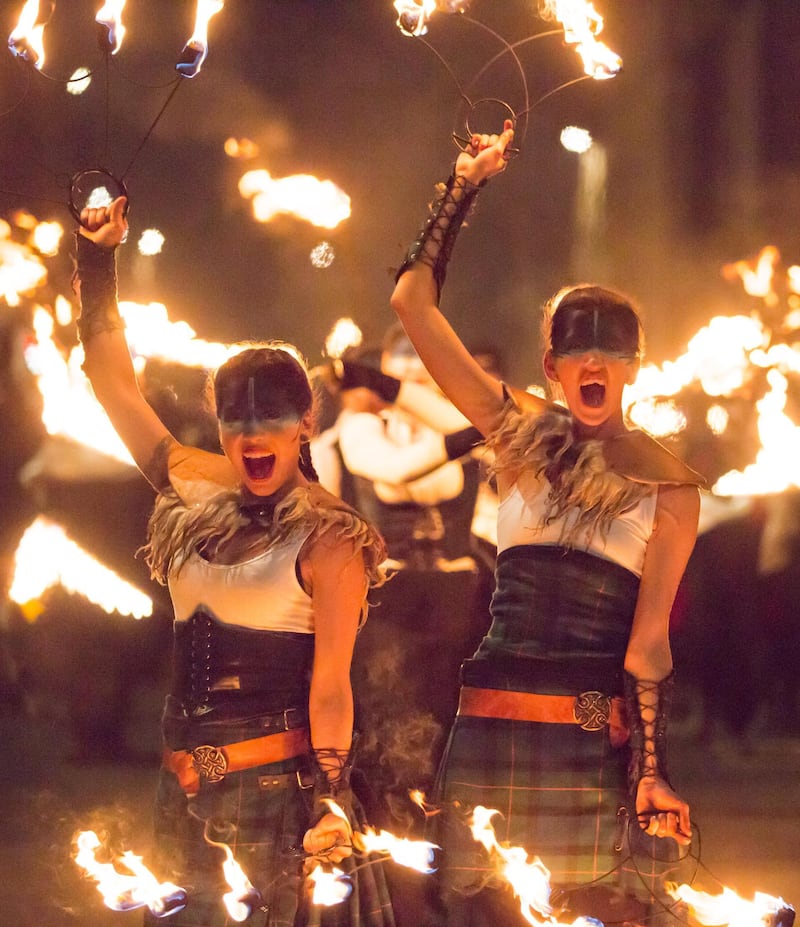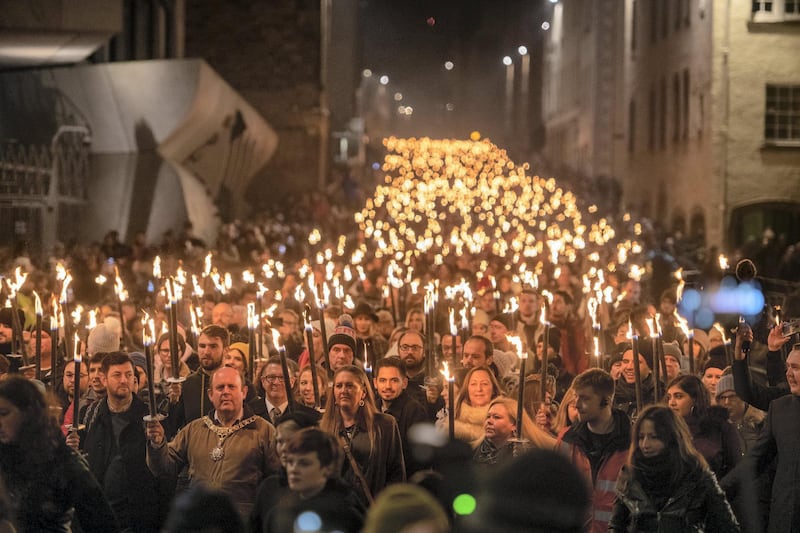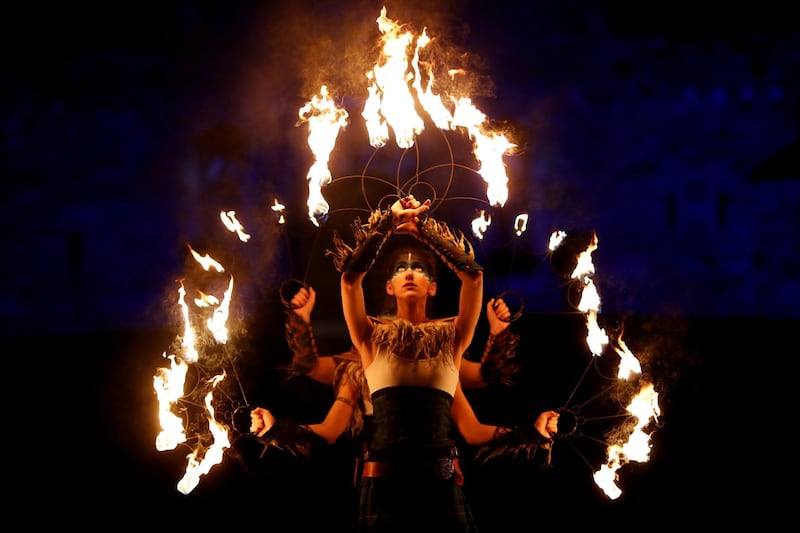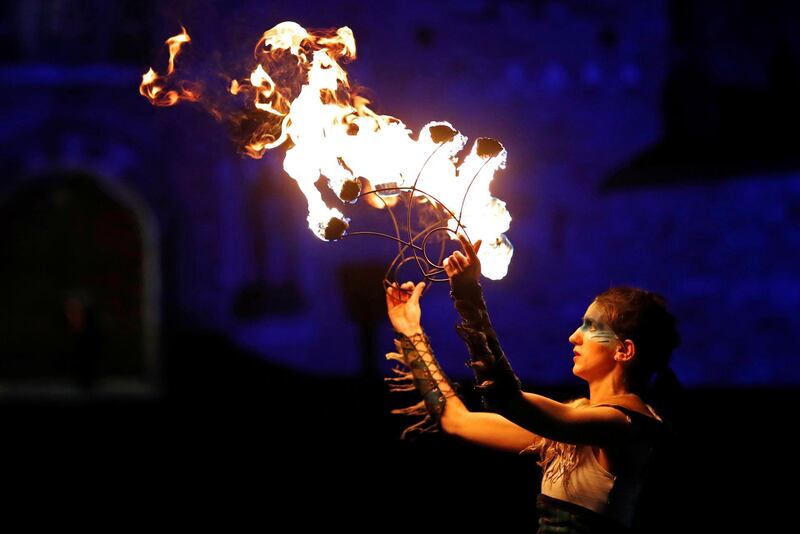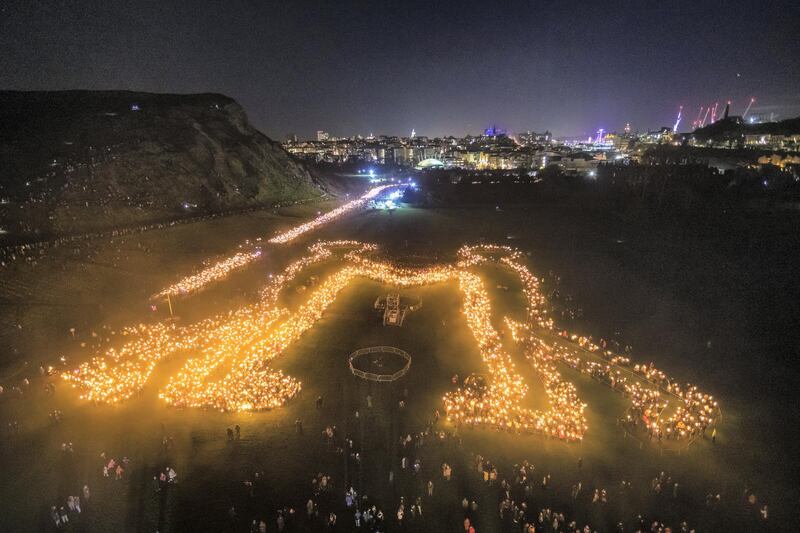Every December 31, people around the world gather to ring in the new year while waving goodbye to the old one ― something many will be doing gladly this year.
Parties and fireworks are commonplace as the clock counts down to midnight, but around the world, there are also plenty of other traditional ways to welcome in the New Year.
From the weird to the wonderful, here are 13 New Year's Eve traditions from across the globe.
Serving 12 spherical fruits, the Philippines
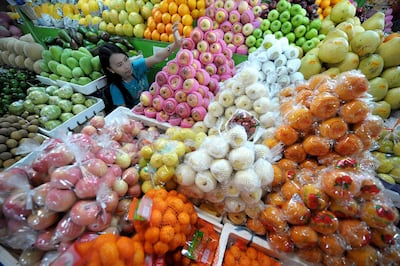
On New Year’s Eve, families in the Philippines make sure to serve 12 sperical fruits, which are believed to represent prosperity because they're round, like coins. As for the lucky number, each fruit represents one month of the year. The fruits usually take centre stage at the table during the midnight meal.
The 108 bell chimes, Japan
At midnight on December 31, 108 bells ring out all over Japan. The practice is called Joya-no-Kane and the bells are rung from Buddhist. The number of chimes represents what is known in Buddhism as the "earthly desires". If you're in Japan, you can witness the bells toll on TV or hear them on the radio.
Banging pots and pans, Ireland
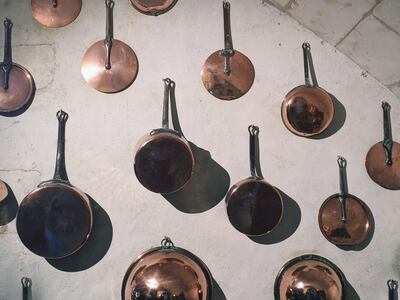
As the clock strikes midnight around the world, many people take to the streets to ring in the New Year by banging pots and pans. The tradition is carried out across the world, from the UK to Australia, although it is widely believed that the tradition originated in Ireland. The action is said to ward off evil spirits and negativity, paving the way for a happy and positive year ahead.
Calennig, Wales
Though this tradition isn’t particularly popular in the modern world, there was a time when this Welsh gift-giving rite was as beloved as Christmas Day itself. From dawn until about noon on New Year’s Day, children would go door to door in a game that shares some similarities with trick or treat. Singing or relaying rhymes on doorsteps, they would be rewarded with gifts of copper coins or sweets. The word calennig refers to an apple or orange skewered with cloves and dried fruit. These would be carried by the children as a symbol of good luck, and later displayed in their family homes.
Setting fire to wishes, Armenia
We all know to make a wish as the clock strikes 12 on New Year’s Eve, but in some parts of the world, they don’t just make a wish, they consume it. In a tradition traced back to Russia, some families write their wishes for the New Year on scraps of paper, which they then set on fire and put in their glass of drink. It is then customary to drink the ashes as the clock strikes its twelfth chime. This custom is also common place in Armenia.
Vasilopita cake, Cyprus
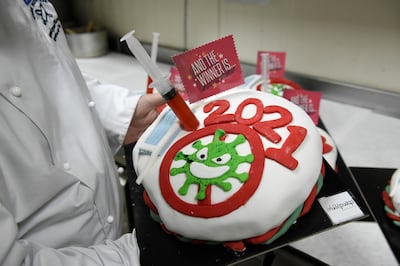
In Cyprus, a New Year is ushered in with cake. In the Greek Orthodox religion, January 1 is the name day of Saint Basil, or Ayios Vasilios, who is the saint associated with Father Christmas, as opposed to Saint Nicholas in the western tradition. And so, on the first of the year, a cake named in his honour, the “vasilopita”, is served, in a tradition that is also observed across Greece, the Balkans and parts of Eastern Europe.
In days gone by, the cake was cut by the head of the family, in the presence of loved ones, and was meant to bring blessings into the home. Hidden within the sweet treat, which is crafted from a variety of different doughs, depending on individual family traditions, is a coin. Whoever gets the slice containing that little trinket is supposed to be granted good luck for the rest of the year.
Cutting apples, the Czech Republic
As the New Year approaches, people in the Czech Republic traditionally cut an apple in two, in order to predict how the year ahead might look. Should the core be surrounded by the shape of a star, you are in for a good and lucky year ahead. If the core is in the shape of a cross, you could be in for a treacherous 12 months.
Chair-jumping, Denmark
As the clock strikes midnight in Denmark, it is tradition to stand on a chair and jump down to the floor. By spending the last moments of the year with your feet off the ground, the Danes believe you can jump into the New Year fresh, leaving any negativity and bad vibes in the year just elapsed.
Hogmanay, Scotland
Hogmanay is the Scottish word for the last day of the year. Many believe it dates back to the 8th century when the Vikings invaded Scotland. These raiders would celebrate the winter solstice with huge fire-burning parties. In Scotland's northern Shetland Isles, the annual Up Helly Aa fire festivals continue this tradition, but across the rest of the country it has evolved into Hogmanay.
The celebration also gained prominence when religious leaders expelled Christmas across Scotland due to religious divides. With Christmas banned for nearly 400 years, many people simply made Hogmanay the bigger celebration.
When the clock strikes midnight, people greet each other with traditional toasts such as "Lang may yer lum reek”. This is Scots for 'long will your chimney smoke', and is a wish for good fortune.
Auld Lang Syne, a poem by Scotland's most famous poet Robert Burns, has become the soundtrack for New Year around the world. At every Scottish ceilidh or Hogmanay party, people gather in a circle to link arms and belt out the lyrics after the clock strikes 12.
Eating 12 grapes, Spain
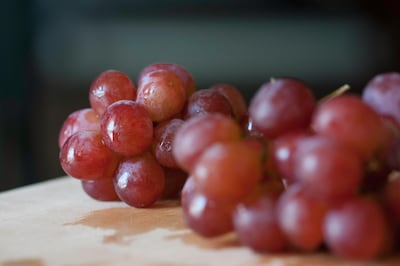
In the minute before midnight on New Year's Eve, people in Spain traditionally eat 12 grapes. The custom is thought to bring luck and good fortune for the year ahead, as well as ward off any evil spirits that may be lurking. New Year's grape-eating is also common place in Latin America and Indonesia.
Wave-jumping, Brazil
If you head to the shoreline on one of Brazil's many beautiful beaches at the countdown to midnight on New Year's Eve, you will probably see many people wading in the shallows, preparing to enter the New Year with the custom of jumping over seven waves – one for each day of the week. In doing so, Brazilians pay honour to Yemoja, goddess of the sea, in the hopes of getting in her good books for the year ahead. It is also commonplace to bring offerings such as jewellery and flowers, to leave at the shoreline.
Carrying an empty suitcase, Latin America
In Latin America, revellers with wanderlust see in the New Year by carrying an empty suitcase on a stroll around their block. It is thought the act is enough to ensure the year ahead will be filled with travel and adventure. People have also taken to racing with empty suitcases, too, in a bid to speed things along.
A midnight kiss, Germany
Derived from German folklore, it is tradition for people in the much of the western world to share a kiss at midnight. The custom has been around since the 4th century, and it is thought the kiss will bring both you and your beloved shared good fortunes for the year ahead.
